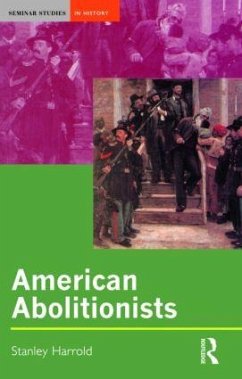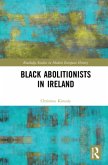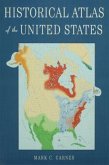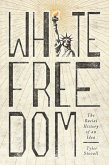Stanley Harrold
American Abolitionists
Stanley Harrold
American Abolitionists
- Broschiertes Buch
- Merkliste
- Auf die Merkliste
- Bewerten Bewerten
- Teilen
- Produkt teilen
- Produkterinnerung
- Produkterinnerung
This work examines the movement to abolish slavery in the US, from the origins of the movement in the 18th century through to the Civil War and the abolition of slavery in 1865. Within a basic chronological framework it also considers black abolitionists, feminism, and anti-slavery violence.
Andere Kunden interessierten sich auch für
![Bismarck and Germany Bismarck and Germany]() D.G. WilliamsonBismarck and Germany56,99 €
D.G. WilliamsonBismarck and Germany56,99 €![Black Abolitionists in Ireland Black Abolitionists in Ireland]() Christine KinealyBlack Abolitionists in Ireland152,99 €
Christine KinealyBlack Abolitionists in Ireland152,99 €![Black Abolitionists in Ireland Black Abolitionists in Ireland]() Christine KinealyBlack Abolitionists in Ireland152,99 €
Christine KinealyBlack Abolitionists in Ireland152,99 €![The American Revolution 1775-1783 The American Revolution 1775-1783]() Richard L. BlancoThe American Revolution 1775-178336,99 €
Richard L. BlancoThe American Revolution 1775-178336,99 €![Historical Atlas of the United States Historical Atlas of the United States]() Mark C. CarnesHistorical Atlas of the United States254,99 €
Mark C. CarnesHistorical Atlas of the United States254,99 €![White Freedom White Freedom]() Tyler StovallWhite Freedom35,99 €
Tyler StovallWhite Freedom35,99 €![Atlas of the English Civil War Atlas of the English Civil War]() Peter NewmanAtlas of the English Civil War48,99 €
Peter NewmanAtlas of the English Civil War48,99 €-
-
-
This work examines the movement to abolish slavery in the US, from the origins of the movement in the 18th century through to the Civil War and the abolition of slavery in 1865. Within a basic chronological framework it also considers black abolitionists, feminism, and anti-slavery violence.
Produktdetails
- Produktdetails
- Seminar Studies In History
- Verlag: Taylor & Francis Ltd
- Seitenzahl: 196
- Erscheinungstermin: 16. Februar 2001
- Englisch
- Abmessung: 234mm x 156mm x 11mm
- Gewicht: 412g
- ISBN-13: 9780582357389
- ISBN-10: 0582357381
- Artikelnr.: 21363682
- Herstellerkennzeichnung
- Libri GmbH
- Europaallee 1
- 36244 Bad Hersfeld
- gpsr@libri.de
- Seminar Studies In History
- Verlag: Taylor & Francis Ltd
- Seitenzahl: 196
- Erscheinungstermin: 16. Februar 2001
- Englisch
- Abmessung: 234mm x 156mm x 11mm
- Gewicht: 412g
- ISBN-13: 9780582357389
- ISBN-10: 0582357381
- Artikelnr.: 21363682
- Herstellerkennzeichnung
- Libri GmbH
- Europaallee 1
- 36244 Bad Hersfeld
- gpsr@libri.de
Stanley Harrold is Professor of History at South Carolina State University and author of The Abolitionists and the South.
Part 1 Introduction
Chapter 1 The Abolitionists in American History
Part 2 Analysis
Chapter 2 Early Abolitionism
Chapter 3 The Rise of Immediatism
Chapter 4 Abolitionists and Gender
Chapter 5 Abolitionists and Race
Chapter 6 A More Aggressive Abolitionism
Chapter 7 Violent Abolitionism
Chapter 8 Abolitionists and Black Freedom
Part 3 Assessment
Chapter 9 Abolitionists and the Reform Tradition
Part 4 Documents
Chapter 10 Document 1 John Woolman Warns Slaveholders, 1762
Chapter 11 Document 2 Boston Slaves Petition Foe Feeedom, 1773
Chapter 12 Document 3 A Black Abolitionist Calls on Congress to Take Action Against Slavery, 1797
Chapter 13 Document 4 David Walker Calls on African Americans to Seek Freedom, 1829
Chapter 14 Document 5 William Lloyd Gaeeisom Begins the Liberator, 1831
Chapter 15 Document 6 Declaration of Sentiments of the American Anti-Slavery Society, 1833
Chapter 16 Document 7 Lydia Maria Child on the Impact of Abolitionism on the South, 1833
Chapter 17 Document 8 Angelina Grimke Appeals to White Women of the South on Behalf of Emancipation, 1836
Chapter 18 Document 9 Elijah P. Lovejoy Advocates Defensive Violence, 1837
Chapter 19 Document 10 Gerrit Smith Calls on Slaves to Escape and on Abolitionists to Help Them, 1842
Chapter 20 Document 11 Henry Highland Garnet Calls on Slaves to Challenge Their Masters, 1843
Chapter 21 Document 12 Cassius M. Clay on the Sinfulness of Slavery, 1845
Chapter 22 Document 13 Gamaliel Bailey Introduces His National Era to a Southern White Audience, 1847
Chapter 23 Document 14 Frederick Douglass Comments on the First Women's Rights Convention, 1848
Chapter 24 Document 15 Sojourner Truth on Women's Rights, 1851
Chapter 25 Document 16 Franklim B. Sanborn Presents John Brown's Violent Commitment to Equal Rights, 1857-59
Chapter 26 Document 17 Wendell Phillips Reflects on the Election of Abraham Lincoln, 1860
Chapter 27 Document 18 Frederick Douglass Urges Black Men to Enlist in a Union War for Emancipation, 1863
Chapter 1 The Abolitionists in American History
Part 2 Analysis
Chapter 2 Early Abolitionism
Chapter 3 The Rise of Immediatism
Chapter 4 Abolitionists and Gender
Chapter 5 Abolitionists and Race
Chapter 6 A More Aggressive Abolitionism
Chapter 7 Violent Abolitionism
Chapter 8 Abolitionists and Black Freedom
Part 3 Assessment
Chapter 9 Abolitionists and the Reform Tradition
Part 4 Documents
Chapter 10 Document 1 John Woolman Warns Slaveholders, 1762
Chapter 11 Document 2 Boston Slaves Petition Foe Feeedom, 1773
Chapter 12 Document 3 A Black Abolitionist Calls on Congress to Take Action Against Slavery, 1797
Chapter 13 Document 4 David Walker Calls on African Americans to Seek Freedom, 1829
Chapter 14 Document 5 William Lloyd Gaeeisom Begins the Liberator, 1831
Chapter 15 Document 6 Declaration of Sentiments of the American Anti-Slavery Society, 1833
Chapter 16 Document 7 Lydia Maria Child on the Impact of Abolitionism on the South, 1833
Chapter 17 Document 8 Angelina Grimke Appeals to White Women of the South on Behalf of Emancipation, 1836
Chapter 18 Document 9 Elijah P. Lovejoy Advocates Defensive Violence, 1837
Chapter 19 Document 10 Gerrit Smith Calls on Slaves to Escape and on Abolitionists to Help Them, 1842
Chapter 20 Document 11 Henry Highland Garnet Calls on Slaves to Challenge Their Masters, 1843
Chapter 21 Document 12 Cassius M. Clay on the Sinfulness of Slavery, 1845
Chapter 22 Document 13 Gamaliel Bailey Introduces His National Era to a Southern White Audience, 1847
Chapter 23 Document 14 Frederick Douglass Comments on the First Women's Rights Convention, 1848
Chapter 24 Document 15 Sojourner Truth on Women's Rights, 1851
Chapter 25 Document 16 Franklim B. Sanborn Presents John Brown's Violent Commitment to Equal Rights, 1857-59
Chapter 26 Document 17 Wendell Phillips Reflects on the Election of Abraham Lincoln, 1860
Chapter 27 Document 18 Frederick Douglass Urges Black Men to Enlist in a Union War for Emancipation, 1863
Part 1 Introduction
Chapter 1 The Abolitionists in American History
Part 2 Analysis
Chapter 2 Early Abolitionism
Chapter 3 The Rise of Immediatism
Chapter 4 Abolitionists and Gender
Chapter 5 Abolitionists and Race
Chapter 6 A More Aggressive Abolitionism
Chapter 7 Violent Abolitionism
Chapter 8 Abolitionists and Black Freedom
Part 3 Assessment
Chapter 9 Abolitionists and the Reform Tradition
Part 4 Documents
Chapter 10 Document 1 John Woolman Warns Slaveholders, 1762
Chapter 11 Document 2 Boston Slaves Petition Foe Feeedom, 1773
Chapter 12 Document 3 A Black Abolitionist Calls on Congress to Take Action Against Slavery, 1797
Chapter 13 Document 4 David Walker Calls on African Americans to Seek Freedom, 1829
Chapter 14 Document 5 William Lloyd Gaeeisom Begins the Liberator, 1831
Chapter 15 Document 6 Declaration of Sentiments of the American Anti-Slavery Society, 1833
Chapter 16 Document 7 Lydia Maria Child on the Impact of Abolitionism on the South, 1833
Chapter 17 Document 8 Angelina Grimke Appeals to White Women of the South on Behalf of Emancipation, 1836
Chapter 18 Document 9 Elijah P. Lovejoy Advocates Defensive Violence, 1837
Chapter 19 Document 10 Gerrit Smith Calls on Slaves to Escape and on Abolitionists to Help Them, 1842
Chapter 20 Document 11 Henry Highland Garnet Calls on Slaves to Challenge Their Masters, 1843
Chapter 21 Document 12 Cassius M. Clay on the Sinfulness of Slavery, 1845
Chapter 22 Document 13 Gamaliel Bailey Introduces His National Era to a Southern White Audience, 1847
Chapter 23 Document 14 Frederick Douglass Comments on the First Women's Rights Convention, 1848
Chapter 24 Document 15 Sojourner Truth on Women's Rights, 1851
Chapter 25 Document 16 Franklim B. Sanborn Presents John Brown's Violent Commitment to Equal Rights, 1857-59
Chapter 26 Document 17 Wendell Phillips Reflects on the Election of Abraham Lincoln, 1860
Chapter 27 Document 18 Frederick Douglass Urges Black Men to Enlist in a Union War for Emancipation, 1863
Chapter 1 The Abolitionists in American History
Part 2 Analysis
Chapter 2 Early Abolitionism
Chapter 3 The Rise of Immediatism
Chapter 4 Abolitionists and Gender
Chapter 5 Abolitionists and Race
Chapter 6 A More Aggressive Abolitionism
Chapter 7 Violent Abolitionism
Chapter 8 Abolitionists and Black Freedom
Part 3 Assessment
Chapter 9 Abolitionists and the Reform Tradition
Part 4 Documents
Chapter 10 Document 1 John Woolman Warns Slaveholders, 1762
Chapter 11 Document 2 Boston Slaves Petition Foe Feeedom, 1773
Chapter 12 Document 3 A Black Abolitionist Calls on Congress to Take Action Against Slavery, 1797
Chapter 13 Document 4 David Walker Calls on African Americans to Seek Freedom, 1829
Chapter 14 Document 5 William Lloyd Gaeeisom Begins the Liberator, 1831
Chapter 15 Document 6 Declaration of Sentiments of the American Anti-Slavery Society, 1833
Chapter 16 Document 7 Lydia Maria Child on the Impact of Abolitionism on the South, 1833
Chapter 17 Document 8 Angelina Grimke Appeals to White Women of the South on Behalf of Emancipation, 1836
Chapter 18 Document 9 Elijah P. Lovejoy Advocates Defensive Violence, 1837
Chapter 19 Document 10 Gerrit Smith Calls on Slaves to Escape and on Abolitionists to Help Them, 1842
Chapter 20 Document 11 Henry Highland Garnet Calls on Slaves to Challenge Their Masters, 1843
Chapter 21 Document 12 Cassius M. Clay on the Sinfulness of Slavery, 1845
Chapter 22 Document 13 Gamaliel Bailey Introduces His National Era to a Southern White Audience, 1847
Chapter 23 Document 14 Frederick Douglass Comments on the First Women's Rights Convention, 1848
Chapter 24 Document 15 Sojourner Truth on Women's Rights, 1851
Chapter 25 Document 16 Franklim B. Sanborn Presents John Brown's Violent Commitment to Equal Rights, 1857-59
Chapter 26 Document 17 Wendell Phillips Reflects on the Election of Abraham Lincoln, 1860
Chapter 27 Document 18 Frederick Douglass Urges Black Men to Enlist in a Union War for Emancipation, 1863








